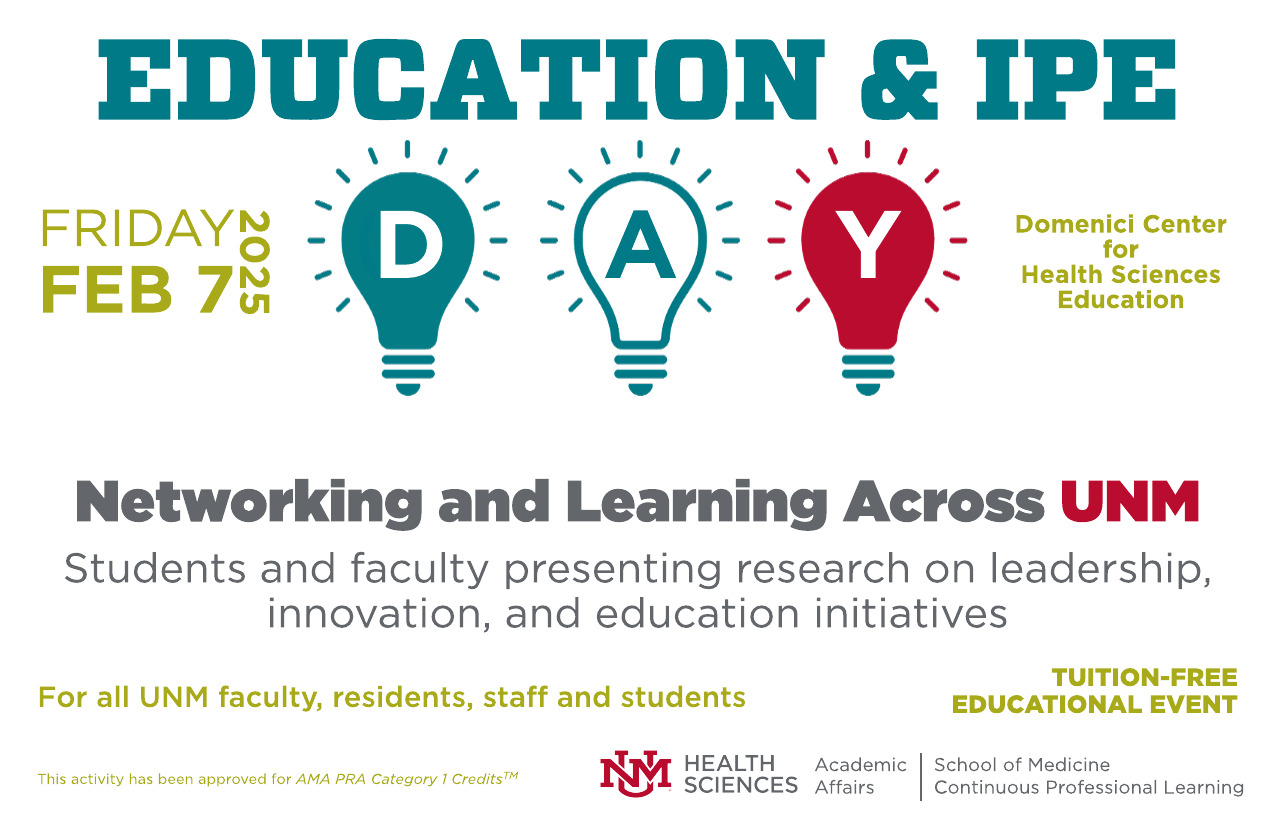
HSC Education Days
Document Type
Poster
Publication Date
10-4-2019
Abstract
BACKGROUND: The alcohol consumption patterns of physicians impacts the health of their patients. How much a physician drinks influences how they counsel patients about alcohol use and how they define safe and acceptable patterns of use. In addition, physicians with alcohol use disorder are at greater risk for making medical errors. 15.3% of American physicians meet criteria for alcohol dependence or abuse. Female physicians are more likely than their male counterparts to meet this diagnostic criteria (21.4% of female physicians vs. 12.9% of male physicians). U.S. medical students are known to engage in excessive use of alcohol. One study concluded the prevalence of binge drinking in sampled medical students was 58%, and other studies have demonstrated a prevalence of excessive drinking in approximately 34% in medical students. We surveyed University of New Mexico School of Medicine (UNM SOM) students in order to understand their patterns of alcohol consumption and how these patterns compare with students at other medical schools and with other physicians METHODS: Data was collected as part of an ongoing survey intended to evaluate trends of overall wellness among medical students at The University of New Mexico School of Medicine (UNM SOM). The survey is administered at the beginning and end of the first year of school, and at the end of the third year of medical school. We used the validated AUDIT-C score to assess student patterns of alcohol use. RESULTS: 529 unique medical students from the UNM SOM Classes of 2018-2022 were invited to complete the survey. The response rate was 89%, with 473 students responding.
Of the students surveyed, 16.7% of men and 17.1% of women met criteria for alcohol use disorder (AUD) (AUDIT-C scores of ≥ 4 for women and 5 for men). 16.9% of all respondents met AUD criteria. A total of 35.7% of UNM SOM students sampled met criteria for at-risk drinking using AUDIT-C. There was significant variation in this group by gender: 30.1% of men met criteria for at-risk drinking, compared to 40.5% of women students (p =.001).
No correlation was seen between risky drinking and age, level of engagement in self-care, exercise levels, or burnout scores, nor were significant correlations seen between any of these metrics and AUD. CONCLUSION: A large percentage of UNM medical students engage in risky alcohol use and alcohol use patterns. While these patterns are mostly consistent with national patterns, they are concerning given the impact of alcohol on physician errors and behaviors. Research is needed on best way to discuss and address alcohol use behavior in medical students and to better understand how ETOH patterns in medical school change or persist during residency training and practice. Research is needed on the gender gap seen in practicing physicians and in our students.
Recommended Citation
Scarpa, Aaron; Michael Castle; Ian Fletcher; and Elizabeth Lawrence. "An Assessment of Alcohol Use Patterns amongst Medical Students at the University of New Mexico School of Medicine." (2019). https://digitalrepository.unm.edu/hsc_ed_day/49

Comments
This poster was presented during the University of New Mexico Health Sciences Center Education Day, 2019.